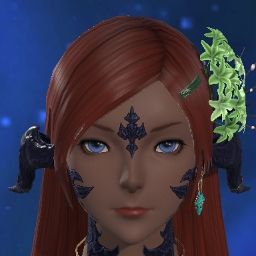Pretty much as the title says, what seperates the jobs from the classes. I know that for black magic, a defining trait is using aether outside of ones own body to power spells. However, many of the story information about black magic also seems to say that beyond just being a convenient outside source for aether, Black Magic is innately attuned to the energies of the void. I wonder if there is anything more to that.
White Magic I'm a little less clear on. The questline has you performing more communing with the elementals of the forest, which is basically what conjury is if I'm not mistaken. Though some story information seems to give the impression that white magic is specifically about bestowing life onto things, whether it's rescuing a comrade from death or enchanting a statue with holy life.
Any more information on what it is that makes these forbidden arts forbidden?
-
07-27-2016 12:48 PM #1
What seperates Black Magic and Thaumaturgy, White Magic and Conjury?
(1)
-
07-27-2016 01:00 PM #2Player

- Join Date
- Mar 2011
- Location
- Limsa Lominsa
- Posts
- 5,043
- Character
- Anony Moose
- World
- Excalibur
- Main Class
- Arcanist Lv 100
DISCLAIMER:
I know; this is way more than you bargained for.
Feel free to jump to the tl;dr at the bottom and come back for the novella if you feel a full explanation would be better.
------------------------------------------------------------------------------------------------------------------------------
The world-lore on these is a bit nuanced and murky because of dev. team changes and the tacking-on of the familiar Final Fantasy job system (under Yoshida) to the reinvent-the-wheel class system (from under Tanaka). Some of this will come from each version, and I'll try to mesh it together as best as I can. Ironically, this will work best if we work chronologically - using the later-developed lore first, since they worked hard to shape it to what was already in the game.
Before we get started, though, it's important to note that the biggest factor in all of this is tradition. Aetherial manipulation is aetherial manipulation; magic is magic. How it's expressed and for what purpose has more to do with the differences than anything. But we'll get back to that later.
Of those you've listed, Black Magic came first - radically destructive magicks using environmental aether (as opposed to being limited by your internal aetherial reservoirs, as a mage usually would be) following in the traditions of Death's Handmaiden, Shatotto. White Magic was developed to counter this and restore balance - succor rather than destruction, leaning towards the Light rather than the Dark.
And here's where it gets messy and a history lesson help make sense of things.
Both of these arts developed during the Fifth Astral Era, throughout which magic was ubiquitous. Having survived the Fifth Umbral Era (aka the Age of Endless Frost) due to the (re)discovery of magic, it was the foundation of the era. Development of magickal techniques fueled competition and friendly rivalries that eventually turned sour and led to the War of the Magi, which caused the collapse of the Fifth Astral and arrival of the Sixth Umbral. The Sixth Umbral Calamity, or the Great Flood, is the reason magic was banned and various schools of the era vanished - people were terrified of magic due to the suffering it had caused and were fearful that history would repeat itself.
The end of the Sixth Umbral is where things get complicated. In the Black Shroud, where Amdapor had thrived in the Fifth Astral, the Elementals forbade living amongst the boughs of the forest. Those who remained were forced underground, building the city of Gelmorra. In the early Sixth Astral Era, the Gelmorrans believed that their situation could improve if they could commune with the Elementals. Being entities of pure aether, they decided aetherial manipulation was the best way to achieve this communion. They refined what few simple charms survived the destruction of magickal knowledge (for 50 years) until they finally achieved their goal, which led to the Pact of Gelmorra (500 years ago) and, soon after, the rise of Gridania.
As part of the Pact of Gelmorra, the Padjal were created to act as intermediaries between the Elemental. Traditionally, only the Padjal may act as stewards of White Magic. However, the charms that succeeded in contacting the Elementals continued to evolve, developing into a magic known today as Conjury. In 1.0, this was all of the elements of nature, and the mage could shape environmental natural energies into their spells. However, because Conjurer became White Mage and Thaumaturge became Black Mage (which traditionally is the master of the elements) they were forced to divide them. In ARR, it now focuses primarily on water, wind, and earth; the boons of nature that support life.
Rewind to the end of the Sixth Umbral, again. While all of this was happening in the Black Shroud, many of the mages that refused to give up magic were persecuted and exiled. Wandering together, they founded the nation of Belah'dia in Thanalan - a city of mages, by mages, for mages. Black Magic may have vanished, but traces of its DNA lived on in the magicks wielded by this city. Eventually, the Belah'dian throne gave birth to twins that both refused to let the other inherit the throne. Belah'dia split into Ul'dah and Sil'dih, and the latter was eventually destroyed when they went to war. But the mage traditions lived on, nowhere more evident than in Ul'dah's prominent religious organization: The Order of Nald'thal.
In 1.0, thaumaturgy was opposite conjury - rather than dealing with environmental aether and the elements, it channeled aether from within and molded it according to the polarities that exist within the elements (and all things): Astral and Umbral (and thus their association with Life and Death, and thus the twin gods Nald and Thal). Again. ARR muddled this up a bit due to the Conjurer / Black Mage division of the elements. In ARR, thaumaturgy has been altered to show a focus primarily on ice, fire, and lightning, the forces of natural destruction that threaten life. Lore was crafted tying these to the Order's funeral rights: Ice to stop corruption, Fire to cleanse the body, Lightning to expel sin.
Fun Fact: The Order of Nald'thal actually has two sects. Arrzaneth Ossuray, the THM guild, is associated with Thal, death, and eventual spiritual wealth. You can imagine why the game focuses more on that than the sect of Nald, life, and current material wealth over at Milvaneth Sacrarium, lol.
Again, tradition makes all the difference here. Arts just like what we call conjury and thaumaturgy today existed long ago. The Allagans knew magicks like these, even if they didn't have the same traditions and associations. That's why the answer to your question is so hard to pin down, and that's why I bothered with that rambling digression. But to break it all down and oversimplify it in a way that probably answers your questions better than all that text above?
Black Magic: Destructive magicks wrought using environmental aether, credited to Shatotto by modern historians.
White Magic: Benedictive magicks meant to bring balance against Black Magic, credited to the Amdapori by modern historians.
Conjury: Elemental magicks (especially generative elemental forces)
Thaumatugry: Polar magicks (especially destructive elemental forces)
Arcanima
You didn't request this one, but hey. Crash course!
Arcane constructs are created by temporarily splitting off a part of your own aether and fashioning it into a biddable avatar. In the Third Astral Era, the Allagans used this type of magic to create avatars shaped by the aetherial waveform signatures of primals (which were "recorded" onto their own aether by coming into contact with the aetherial mist left by a primal upon its death) to create Egi. This is the tradition of the Summoner.
In the Fifth Astral Era, Nymian magicks used an avatar designed according to the energies present in nature and fashioned into essentially a manufacted elemental bound to the soulstone, allowing it to gain experience and memories and an identity. (Faeries.) Combined with a rigorous study of mathematics and tactics, this became the Scholar tradition. Arcane geometries could also be used to shape aether into spells with myriad effects.
Today, the avatars in vogue, Carbuncles, are simply shaped according to complex geometries as part of the modern arcanist disciplines that combined traces of what remained from Nym with Lominsan arithmetic (all of this math comes from traditions from the south seas, which we know little about). The formulae that define Carbuncle shape and behavior somehow tap into the latent powers of gemstones, which is the source of the naming conventions.
In fact, the Ceruleum Servant wielded by Regula van Hydrus might be these very same mathematical manipulations achieved via magitek.(35)Last edited by Anonymoose; 07-27-2016 at 03:07 PM.
-
07-27-2016 01:16 PM #3Player

- Join Date
- Oct 2013
- Posts
- 1,906
- Character
- Masekase Hurricane
- World
- Louisoix
- Main Class
- Astrologian Lv 100
A Soul CrystalWhat seperates Black Magic and Thaumaturgy, White Magic and Conjury?(6)
-
07-27-2016 04:08 PM #4Player

- Join Date
- Feb 2015
- Posts
- 1,353
- Character
- Frederick Blake
- World
- Sargatanas
- Main Class
- Paladin Lv 90
I know this hints might be on the BLM
But I did the WHM
But if black magic was vanished, why us, the WoL. Manage to master and resurrect this forgotten arts?
Also why we were let to use them if it is "forbidden" ?(0)
-
07-27-2016 04:46 PM #5Player

- Join Date
- May 2015
- Location
- Limsa Lomisa
- Posts
- 99
- Character
- Autumn Harvestwind
- World
- Lamia
- Main Class
- Conjurer Lv 90
MFW when Moose makes a lore post
 (16)
(16)
-
07-27-2016 09:51 PM #6Player

- Join Date
- Dec 2013
- Posts
- 3,822
- Character
- Lineage Razor
- World
- Gilgamesh
- Main Class
- Goldsmith Lv 90
Adventurers - the Warrior of Light in particular - are allowed to get away with a RIDICULOUS amount of stuff forbidden to most folks. Black and White magic are just two examples among many. While I'm not certain why we're assigned so much trust from the moment we step off the wagon at the start of the game, it certainly has paid off for the various nations of Eorzea, so in the end it was apparently a wise decision.
(2)
-
07-27-2016 11:58 PM #7Player

- Join Date
- Oct 2013
- Location
- Gridania
- Posts
- 4,644
- Character
- Tonrak Totorak
- World
- Gilgamesh
- Main Class
- Red Mage Lv 90
To add to that, BLM needs to have a soul stone (or atleast something similar)
In the BLM quest we're given the Gem of Shattoto which allows to the user to not self-combust while using BLM. It seems as if with enough training people can become BLM as seen with the BLM questline,but they endanger themselves without some sort of Soul Stone/ apparatus that helps focus their power. As for why we can get away with being a BLM ... we prove that BLM is bad when used by a "good" person like the WoL.(1)
-
07-28-2016 05:26 AM #8
-
07-28-2016 08:25 AM #9
If I may ask a follow-up question of you, Moose:
What were the circumstances of the White Mages allegedly killing each other and scarring the land with their battles for power around the level 35-40 x1.2 WHM quests? (I remember one of my favorite OSTs, When Sheep Attack, coming into play around the same time as this was being explained, but saw this only when watching a friend play, and have no access to those particular legacy cutscenes myself.)
Or has my memory gone completely awry?(1)
-
07-28-2016 11:03 AM #10Player

- Join Date
- Mar 2011
- Location
- Limsa Lominsa
- Posts
- 5,043
- Character
- Anony Moose
- World
- Excalibur
- Main Class
- Arcanist Lv 100
Not at all. Most of the LV30-50 job arcs were similar, if not identical, in Version 1 and A Realm Reborn. However, the White Mage story arc was an entirely different tale. If I remember correctly, the lines you're referencing weren't about the white mages killing each other, but were the first hints of the War of the Magi, which we really didn't know too much about. (Not even the names Nym or Mhach).
EDIT
Hokay! I went back over all of the transcripts and my past summaries, just to be safe. Indeed, Raya-O-Senna and Oha-sok are referring to the War of the Magi. We didn't know about Nym, we didn't know about Mhach, we just knew that there was a great war involving mages that brought about a calamity. The white mages didn't kill each other (Well, perhaps some did, yeah? War has traitors.), but fought the other city-states before being more or less taken down by Mhach's summoning of Diabolos.
For those just joining us, what the hells, let's tell the whole story.
The set-up for the story arc revolves around Lifemend Stump, where man and moogle first met. People often leave worn or broken objects on the stump in hopes that they will return to find them repaired by the moogles, who love doing little favors and feeling useful. Recently, however, several items had been stolen from Lifemend Stump (not unprecedented), including the priceless Gridanian relic Nirvana (an ancient staff).
Is this Nirvana the same staff from Thavnair that was re-created as a Zodiac Weapon?
Or did they accidentally (or purposely) re-use the name with no implied connection?
Hells if I know!
Raya-O-Senna went after it alone, so the moogles sent the adventurer after her. The staff was taken by diremites, so it wasn't difficult to relcaim. Once it was, however, an Elemental emerged from Nirvana and attacked. Quelled by Raya-O, the Elemental claimed that it had been sealed in the staff long ago and lashed out in hopes of escape. The young Seedseer didn't find this unusual, as many Elementals had been driven into a frenzy and had been riling up the wildlife, as well (likely a response to effects of Dalamud's descent). As thanks for your assistance, Raya-O permitted the adventurer to use white magic in her name to quell Elementals outside of the Twelveswood, which she could not leave.
From here, the quests focused on quelling the Elementals' fury and slaying enemies that had been tained by their rage, each time deepening the adventurer's understanding of white magic. Oha-sok, the Elemental that emerged from the staff, communeed with Raya-O and the adventurer both as these tasks were completed. She revealed that it was the fear and rage of the world's Elementals that had given her form and awoken her. She also expressed anger that Kan-E-Senna seemed poised to violate the Pact of Gelmorra by joining with Ul'dah and Limsa Lominsa to using her powers in combat, warning that the past could repeat itself.
This reminded Raya-O of the tales of the War of the Magi, where the realm's city-states brought incredibly powerful magicks to bear against one another until the floods of Sixth Umbral Calamity swallowed them all. In the version of the tale that the Seedseer knew, the flood was brought by the Elementals themselves, specifically one born of their combined rage; The Wrath, or The Elemental of Nihility, which she realized was Oha-sok herself.
The phrasing the Elemental uses is quite interesting: "In joining light and shadow, ever do I ensure their eternal separation. <...> By my kindred's rage am I given life, by their keening roused to wakefulness. Ever as I mourn the departure of light, I grieve the coming of shadow." She also says that the Elementals were "freed from the shackles of men" prior to the flood they ushered in.
This is likely all fancy-talk for how Elementals are transcendent from the aetherial realm, that our world is bound to a cycle of cataclysms in a struggle between Light and Dark, and that the mages of the Fifth Astral Era over-utilized the aether in ways that made entities born of it feel like slaves. Still, it's interesting, and perhaps there's some foreshadowing there...
This confused Raya-O. If the Elementals' wrath at whatever was happening (the fall of Dalamud, the upheaval of the aetherial streams, the imbalance of nature), what had stayed Oha-sok's hand? She concluded that the Elemental was never bound to Nirvana at all, but was watching from within; Oha-sok had revealed herself and concocted a story because she realized that the Seedseer would have sensed her presence. But because the Elemental chose to watch for all this time, and to follow the adventurer rather than obey the keening of her kind, Raya-O had hope that Oha-sok still had faith in man's redemption.
With Raya-O's guidance, the adventurer increased their power as a white mage and eventually sought out pieces of ancient garb that enhanced their strength (though they never did find the robes). As the keening of the Elementals reached a crescendo and Oha-sok was about to induce the next calamity by force, the younger Seedseer and the adventurer engaged them directly at the Guardian Tree and - in the end - Oha-sok herself talked them down and quelled their rage, turning herself into the final piece of garb so that she could stay with and assist the adventurer who had shown her that Light could still thrive in the hearts of men.(14)Last edited by Anonymoose; 07-28-2016 at 01:36 PM.
"I shall refrain from making any further wild claims until such time as I have evidence."
– Y'shtola



 Reply With Quote
Reply With Quote









